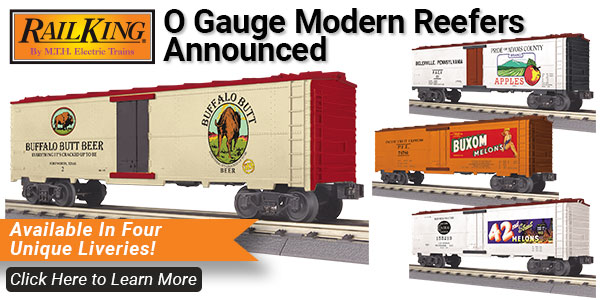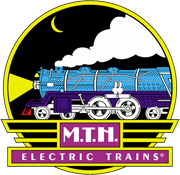
2021 RailKing Modern Reefer Cars Announced
August 17, 2021 - M.T.H. Electric Trains will be releasing several limited-edition releases of the RailKing Modern Reefer Car in a total of four different liveries later this Fall. These unique releases are expected to arrive in December 2021.
The coming of the railroad changed the way America ate and drank. Before the iron horse connected every town of any importance to the outside world, most food was grown or produced locally. The arrival of cheap, fast, refrigerated transport — in the form of the woodsided reefer with ice bunkers at each end — enabled local brewers, dairies, meat processors, and other food businesses to become players on a national scale. Among other things, the reefer enabled Chicago to become “Hog Butcher for the World”; in pre-reefer days, livestock had been transported to local markets and butchered as close as possible to the final consumer.
In the 19th Century, ice for reefers was harvested from frozen ponds each winter and stored as well as possible in insulated icehouses. The advent of mechanical ice making around 1900 greatly increased the capacity of the reefer fleet, which at its height consumed over on e million tons of ice annually. Since loaded cars needed to be re-iced about once per day, icing stations were erected around the country on shipping routes that could be as long as coast-to-coast.
Famed railroad historian John H. White referred to reefers as “the most conservative of all American freight cars,” as reefers retained wood frames and sides long after other types of cars had converted to steel construction. Steel reefers like this RailKing model became common only after 1940, and many wood reefers ran well into the 1960s. Mechanical reefers, with self-powered refrigeration units in each car, became the norm in the second half of the 20th century, and the practice of stopping a train to re-ice during shipment gradually disappeared.
Check out each of the schemes in the list on the left.
Product Features
- Intricately Detailed Durable ABS Body
- Metal Wheels and Axles
- Die-Cast 4-Wheel Trucks
- Operating Die-Cast Metal Couplers
- Colorful, Attractive Paint Schemes
- Decorative Brake Wheels
- Fast-Angle Wheel Sets
- Needle-Point Axles
- Opening Car Doors
- Unit Measures: 11 1/2” x 2 3/8” x 2 5/16”
- Operates On O-27 Curves










